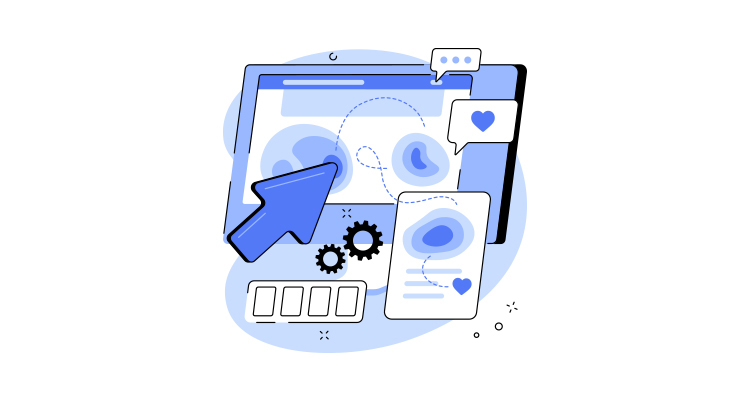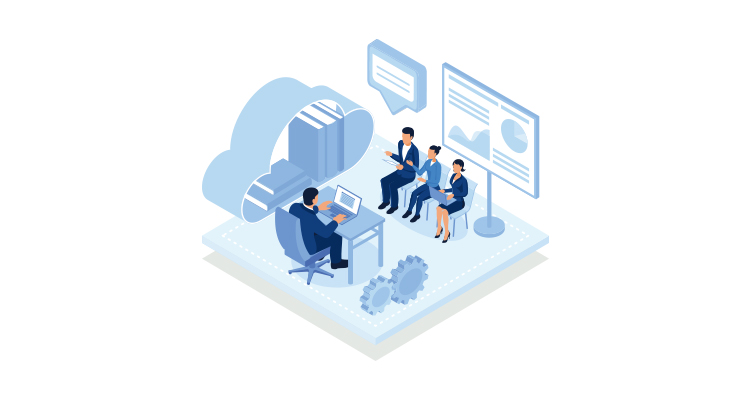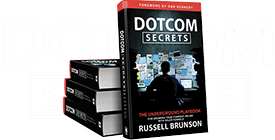It might seem like you don’t need copywriting for affiliate marketing.
After all, the company that sells the product usually provides the sales page for it – all you have to do is drive traffic to it.
But nothing could be further from the truth because copywriting is required at every stage of the affiliate marketing sales funnel.
You need to write:
- Ad copy
- Squeeze page copy
- Email copy
And if you are using a bridge page, then you need to write copy for it as well!
The truth is that copywriting is the most important factor that determines whether you will succeed with affiliate marketing.
That’s why today we are going to share seven tips that can help you write copy that CONVERTS…
- #1: Conduct Extensive Customer Research
- #2: Use Funnel Hacking to Learn What Works
- #3: Use the Hook, Story, Offer Copywriting Framework
- #4: Understand the Difference Between Features and Benefits
- #5: Provide as Much Social Proof as You Can
- #6: Set Up an Automated Welcome Sequence
- #7: Use Scarcity But Only When it Makes Sense
- Want to Learn How to Write Copy That Converts?
#1: Conduct Extensive Customer Research
The best copywriters in the world are the ones that understand their target audiences the best.
And there’s only one way to get there: conducting extensive customer research.
Online Customer Research

The easiest way to learn more about your dream customers is to figure out where they hang out online and then observe the conversations happening there.
This can mean:
- Registering to online forums
- Subscribing to subreddits
- Joining Facebook groups
- Signing up for membership communities
- Following relevant hashtags
…etc.
You can also learn a lot by consuming the content that your dream customers consume such as:
- Books
- Articles
- Newsletters
- YouTube videos
- TikTok videos
- Podcasts
- Info products
It makes sense to also seek out discussions that revolve around that content.
Say, we recommend not only watching YouTube videos but also going through the comment section to see the audience’s reactions.
Text Analytics Software

You can also use text analytics software to:
- Analyze massive quantities of textual data in a short period of time.
- Extract actionable business insights from that textual data.
Say, you could analyze all posts on a niche online forum and learn what topics are the most popular, what words and phrases people use when discussing them, what is the overall emotional sentiment regarding those topics, etc.
We strongly advise investing in text analytics software if you can afford to do so because it can not only drastically speed up customer research but also unlock insights that may not be possible to uncover through manual textual data analysis.
One-on-One Customer Interviews

You also want to talk to your dream customer one-on-one whenever possible because that can help you understand various nuances that might be difficult to pick up on otherwise.
Note that this doesn’t have to mean formal interviews – you can simply go to relevant meetups, events, and conferences and casually talk to your dream customers there to learn more about them.
People love to talk about themselves, so they will likely be happy to share their thoughts with you, provided that you don’t put them on guard by trying to sell them something.
What Should You Learn From Customer Research?
Here’s what you should focus on in your customer research:
- Demographic traits – These are the objective facts about your dream customers such as gender, ethnicity, age, location, occupation, education, income, etc.
- Psychographic traits – This is the psychology of your dream customers – their values, their beliefs, their hopes, fears, dreams, perception of themselves, etc.
- Linguistic patterns – This is how your dream customers express themselves. Pay attention to not just what they say, but how they say it. What words, phrases, and metaphors come up over and over again?
All this information is going to help you write copy that speaks directly to your dream customers in their own language.
DO NOT SKIP CUSTOMER RESEARCH!

We can’t emphasize the importance of customer research enough – it’s impossible to overstate it!
So commit to learning as much as you can about your dream customers – you want to get to the point where you understand them better than they understand themselves.
Keep in mind that customer research is the foundation of all copywriting – without it, nothing else that we discuss in this article will work.
#2: Use Funnel Hacking to Learn What Works
Funnel hacking is the process of going through your competitors’ sales funnels to see what they are up to.
It can help you learn what resonates with your target audience. Why waste time reinventing the wheel when you can simply do what’s already been proven to work?
Moreover, it can also help you identify the weaknesses in your competitors’ approaches, which you can then use to differentiate yourself from them.
When it comes to affiliate marketing, you want to do two types of funnel hacking:
- Funnel hacking your direct competitors – that are selling the exact same affiliate product as you.
- Funnel hacking your indirect competitors – that are selling different products that address the exact same problem.
So, for example, if your affiliate product is a weight loss plan, you want to look at both businesses that sell that exact same weight loss plan and businesses that sell different weight loss plans.
The main idea behind funnel hacking is simple:
You sign up for your competitors’ free offers, then buy as many of their paid products as you can afford to.
This gives you an inside look into your competitors’ funnel structures, offers, and copy.
Needless to say, you shouldn’t outright plagiarize your competitors’ copy – that’s not only unethical but also illegal and can get you into serious trouble.
But if you know that someone is making six or seven figures selling the same affiliate product as you, it makes sense to learn from them and then apply those lessons in your own business.
Learn more: “Marketing Funnel Hacking: Everything You Need to Be a Funnel Hacker”
#3: Use the Hook, Story, Offer Copywriting Framework
We believe that the best copywriting framework is what’s called Hook, Story, Offer:
Hook
Hook your dream customers with a compelling headline.
This can mean:
- A benefit-driven headline – that emphasizes the #1 benefit of your offer.
- An emotion-driven headline – that is designed to resonate on an emotional level.
- A pattern-interrupt headline – that is so wacko that it makes people stop, do a double-take, and click to see what it’s all about.
Keep in mind that the headline is the most important copywriting element.
David Ogilvy, one of the best copywriters that ever lived, allegedly said that:
“On the average, five times as many people read the headline as read the body copy. When you have written your headline, you have spent eighty cents out of your dollar.”
And he was a 20th-century man – presumably, he was talking about print ad headlines.
It’s probably safe to assume that today’s headlines are even more important given how much more distracted we all are!
Story
Human beings have evolved to learn through stories – that’s why we are so fascinated by fiction, whether it would be books, TV shows, or movies.
This means that storytelling is the best way to connect with your dream customers, establish yourself as an authority on the subject, and convey the value of your affiliate offer.
Tell them about the problem you had, how you struggled with it, and how the affiliate product helped you solve it.
Offer
Finally, you should transition from your story to your sales pitch and then end your sales pitch with a clear call to action.
By the way, this framework can be used for anything from ad copy to lead magnet landing page copy to email copy to sales page copy.
Here’s how our co-founder Russel Brunson explains it:
#4: Understand the Difference Between Features and Benefits
One of the most important copywriting principles that you need to understand is the distinction between features and benefits:
- A feature is a quality or a function of a product (e.g. “These shoes are waterproof!”).
- A benefit is a value that the customer will derive from that product (e.g. “These shoes will keep your feet dry!”).
Ultimately, people buy based on benefits, not on features.
After all, no one buys waterproof shoes just because, we buy them so that we could keep our feet dry when walking in rain or snow.
You need to understand what are the benefits of your affiliate product and what are its features so that you could emphasize the former and support your pitch with the latter.
How will this product make the potential customer’s life better?
Make sure to focus on that all throughout your copy.
#5: Provide as Much Social Proof as You Can

Social proof is a psychological principle that says that when people are unsure of what to do, they look at what others do to determine the best course of action.
In the business context, this means that when people are unsure of whether or not to buy your product, they seek out the opinions of others.
After all, everyone knows that you have a financial incentive to praise whatever it is that you are selling. Of course, you say that it’s great. You stand to profit from it.
That’s why what you say about your product has less influence than what other people say about it.
The most powerful social proof is direct social proof which relates to the product itself – so consider writing up customer case studies and collecting customer testimonials.
This can work especially well if you offer exclusive bonuses to people who buy through you because you can ask customers to mention those bonuses in their testimonials.
It can be a great way to differentiate yourself from others who sell that same affiliate product.
There’s also the indirect social proof which relates to you as a person as opposed to the product that you are selling.
It includes relevant credentials, accomplishments, numbers, endorsements from well-known people, being featured in the media, etc.
It’s best to use both direct and indirect social proof when writing copy.
#6: Set Up an Automated Welcome Sequence
We don’t recommend hitting the potential customer with a sales pitch the moment you get their email address. Why?
Because you probably haven’t built enough trust yet – and you need a certain level of trust to close the sale.
Consider setting up an automated welcome sequence where over the course of a week you introduce yourself to the potential customer, tell them your story, provide social proof…And then pitch your affiliate product!
#7: Use Scarcity But Only When it Makes Sense
Scarcity is a psychological principle that says that we value scarce things – the less available something is, the more we value it.
In the business context, this principle is commonly applied using limited-time offers such as product launch discounts, seasonal sales, and so on.
We recommend applying it in affiliate marketing but only when it makes sense – don’t say “Only 7 copies left!!!” when you are selling an ebook.
Moreover, if you want to use scarcity, then you need to commit to it – if you say that the offer will expire in 24 hours, but it’s still there a week later, that will look manipulative and damage your credibility.
One way to apply scarcity to info products that don’t have any in-built scarcity is to offer a bonus that isn’t scalable.
Say, you can offer a free one-on-one consultation with you for the first 10 people who buy your affiliate product.
Want to Learn How to Write Copy That Converts?
Copywriting is the most important skill that you need if you want to build an online business.
But how can you write copy that converts if you don’t have any previous copywriting experience?
Our friend Jim Edwards wrote a book called “Copywriting Secrets” where he shares everything that you need to know to get started.
If you apply his advice correctly, you should see immediate results, which is what matters the most when you are trying to get a business off the ground.
So don’t hesitate and get a free copy of “Copywriting Secrets” today!



